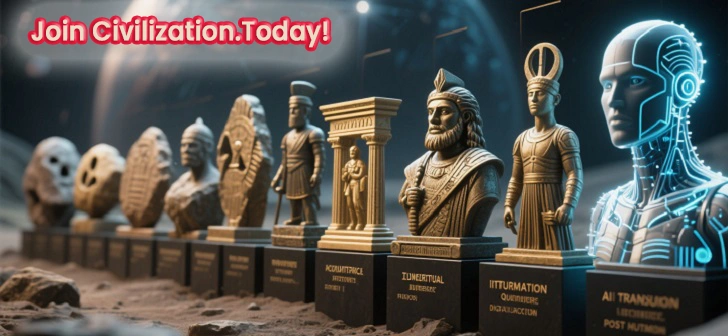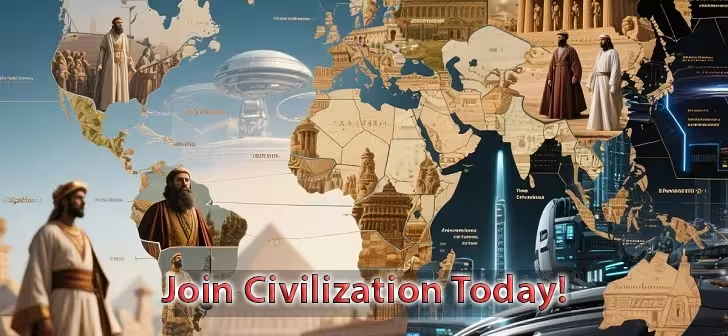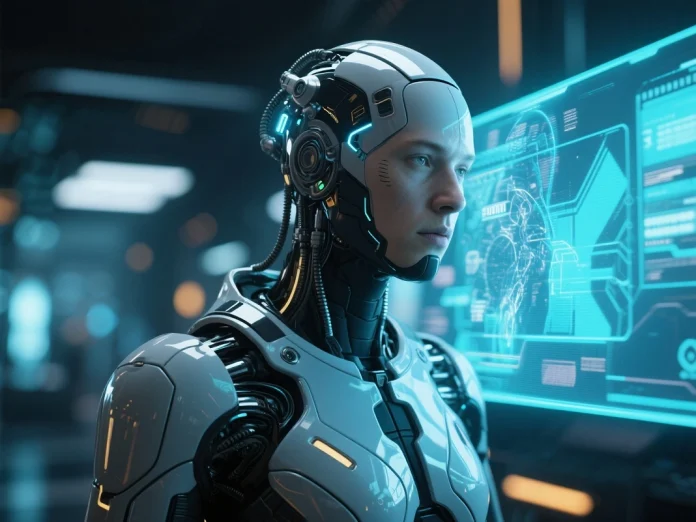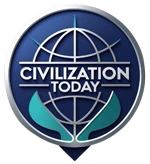In the last few decades, technology has evolved faster than at any other point in human history. Artificial Intelligence, neural interfaces, and bioengineering are no longer confined to the pages of science fiction—they are real, tangible, and rapidly integrating into our daily lives. This bold leap toward Human-Machine Integration is setting the stage for a future where the line between biological intelligence and artificial computation becomes increasingly blurred. Welcome to the dawn of the Hybrid Civilization.
From Tools to Integration: A Brief History
For most of history, humans have created tools to extend their physical abilities—stone axes, wheels, plows, and eventually computers. But these tools were always external, operated by human hands or voice.
Today, the paradigm is shifting. Instead of merely using machines, we are beginning to merge with them. Neural implants, brain-computer interfaces, and AI-assisted decision-making systems are allowing direct integration between human cognitive functions and machine processing power.
Elon Musk’s Neuralink, for instance, aims to create devices that can record and stimulate brain activity, potentially enabling telepathic communication or direct control of computers with thought alone. This isn’t just about convenience—it’s about creating a new form of intelligence that is both human and machine.
Why Human-Machine Integration is Inevitable
The pace of technological advancement is accelerating exponentially. Moore’s Law, while slowing in hardware, has been replaced by an even faster AI development cycle. In parallel, humanity’s challenges—climate change, overpopulation, resource scarcity—are becoming more complex.
To solve these problems, pure human cognition or isolated machine processing may not be enough. Human-Machine Integration promises the best of both worlds: the adaptability, creativity, and empathy of humans combined with the speed, memory, and analytical power of AI.
Imagine:
- Scientists enhancing their memory and recall through a neural link to vast online databases.
- Surgeons performing complex operations with the assistance of AI-powered micro-robots controlled directly by thought.
- Workers learning new skills in minutes through direct brain uploads.
This is no longer fantasy—it’s the direction research is heading.
The Building Blocks of Integration
Creating a hybrid civilization requires several core technologies working in harmony:
1. Brain-Computer Interfaces (BCIs)
BCIs create a direct communication pathway between the human brain and external devices. These systems translate neural signals into commands a computer can understand. Early BCIs have already allowed paralyzed patients to control robotic arms and type messages using only their minds.
2. Artificial Intelligence Augmentation
Instead of replacing humans, AI can enhance human abilities. Decision-support AI can filter vast amounts of data, present optimal solutions, and even anticipate problems before they occur.
3. Biotechnology & Neural Engineering
Advances in biocompatible materials, neural mapping, and stem cell research are allowing us to create seamless connections between biological tissue and electronics.
4. Cloud-Linked Intelligence
By connecting human cognition directly to the cloud, we can access and store information without the limitations of biological memory. This could create a “hive mind” of interconnected human-machine hybrids sharing knowledge in real time.
Opportunities in a Hybrid Civilization
The merging of human and machine intelligence offers immense opportunities:
- Healthcare Revolution: Real-time health monitoring and AI diagnostics could predict and prevent illnesses before symptoms appear.
- Education Redefined: Direct knowledge transfer could eliminate the need for traditional schooling as we know it.
- Economic Efficiency: Enhanced cognitive abilities could drive unprecedented levels of innovation and productivity.
- Space Exploration: Human-machine hybrids could withstand extreme environments, making interplanetary colonization more feasible.
The Ethical and Social Challenges
However, Human-Machine Integration is not without its challenges. As with any transformative technology, it raises deep ethical questions:
- Inequality of Access. Will only the wealthy be able to afford cognitive enhancements, creating a super-intelligent elite?
- Loss of Privacy. If our thoughts can be read or influenced, how do we protect mental autonomy?
- Identity and Humanity. At what point does a human enhanced with AI cease to be “fully human”?
- Security Risks. Cyberattacks on neural systems could have devastating consequences.
These issues must be addressed before mass adoption, or we risk creating a dystopian divide between the “integrated” and the “non-integrated.”
Steps Toward a Responsible Future
The transition to a hybrid civilization must be guided by strong ethical frameworks and global cooperation. Key steps include:
- Establishing Global AI Governance. Unified regulations for AI development, focusing on transparency, safety, and accessibility.
- Neural Data Protection Laws. Legal safeguards for thoughts, memories, and cognitive data.
- Affordable Integration Technology. Preventing enhancement from becoming a privilege of the elite.
- Public Education. Ensuring society understands both the risks and benefits of integration.
A Glimpse Into 2050
By 2050, we may see a world where Human-Machine Integration is as common as smartphones are today. People might carry AI copilots in their minds, capable of translating languages instantly, solving complex problems on the fly, or accessing centuries of historical data with a single thought.
Work, learning, and even relationships could transform into fluid, collaborative exchanges between human emotion and machine logic. The hybrid civilization would not just be faster and smarter—it could be more empathetic, creative, and interconnected than ever before.
Final Thoughts
The merging of human and machine intelligence is not science fiction—it is the next stage of our evolution. By embracing Human-Machine Integration responsibly, we can create a hybrid civilization capable of solving the grand challenges of our time and unlocking new realms of possibility.
The question is no longer if it will happen, but how we choose to shape it. Will we build a future of empowerment, equality, and innovation—or will we allow fear and inequality to dictate the outcome?
The choice, quite literally, is in our minds.




